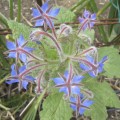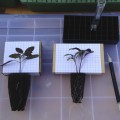Not really in the hyssop family, nor in the anise family 🙂
Botanical Information
Taxonomy
- Agastache foeniculum
- Family: Lamiaceae (Mint Family)
History
Native North American mint-like herb
Physical Description
Flavor: anise
Varieties & Cultivars
Categories or Types
Colors Available
Varieties
Growth Requirements
Climate & Temperature Requirements
Air Temperature
Soil Temperature
Humidity
Day Length or Light Requirements
Site Conditions Favored
Soil Requirements
Soil Texture
pH
Nutrient Requirements
Propagation
Methods of propagation
Seed
Division
Cuttings
Transplanting or Potting Up
Seed Saving
Planting Out
Bed Prep & Soil Amendments
Bed Spacing
Row Spacing
Planting Depth
Alternative Bed Methods
Container Gardening
Routine Cultivation & Maintenance
Water Requirements
Fertilization Recommendations
Mulching & Weeding
Pinching or Pruning & Dividing
Support
Winterizing
Companion Planting
Helpful Companions
Harmful Companions
Companion to..
Pests, Diseases & Problems
Common Pests
Common Diseases
Symptoms
Whole Plant
Leaves
Stem/Trunk
Flowers
Fruit
Roots
Harvesting & Storage
Edible Parts of the Plant
Yield
Days to Harvest / Harvest Timing
Harvest Methods
Storage of harvest
Fresh
Canned
Frozen
Pickled
Dried
Cooking
Nutritional Benefits & Values
Flavor comes mostly from estragole, a flavor compound found in tarragon, basil, anise, star anise, and more – not anethole, as in real anise.
Toxicity
Cooking
Preparation
Cooking Methods
Recipes
Resources
Information for this article was taken from these sources:



